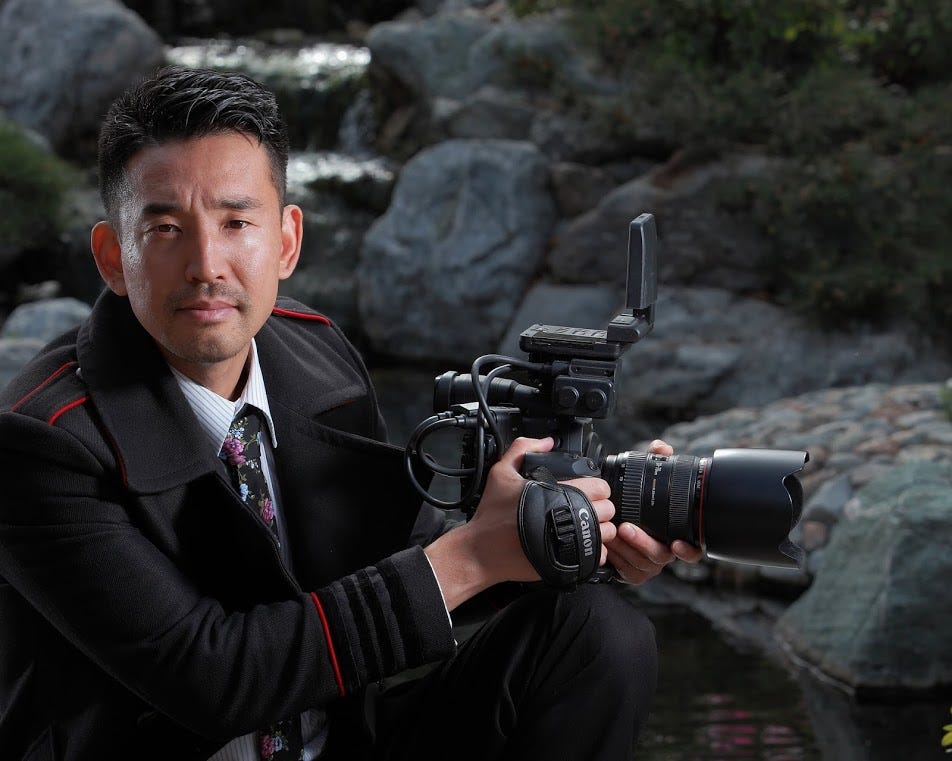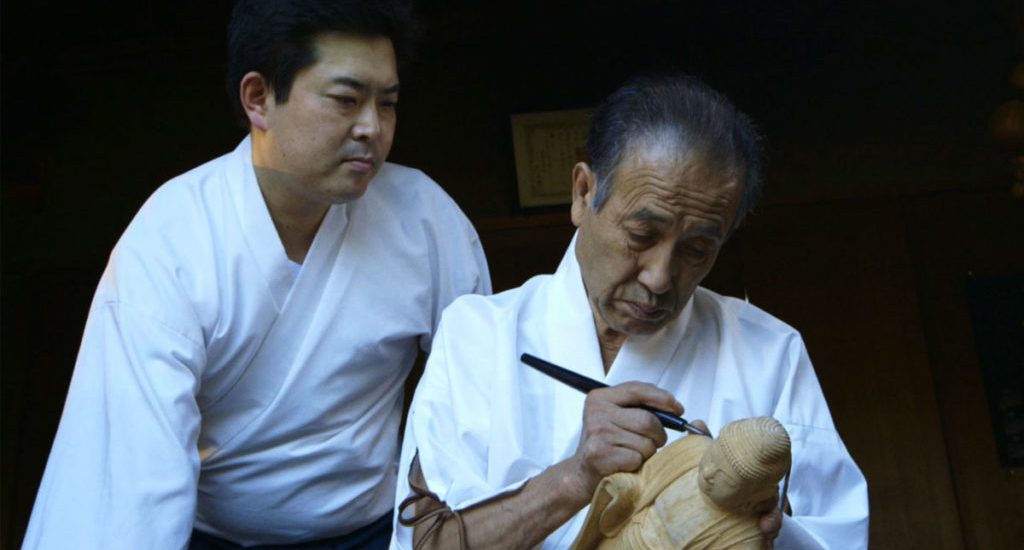When I was visiting Japan in February, I spent a short afternoon walking in the ward of Taito in the greater Tokyo metropolitan area. In Taito, the street of Kappabashi is famous for its exquisite kitchenware, in particular Japanese pottery and the country’s much-lauded kitchen knives. What is slightly less known but just as important to the heritage of Taito’s traditional crafts are the butsudan businesses that have lined the streets since the Edo period. The sight of so many shops selling intricately crafted Buddhist altars, many of them staffed by impeccably dressed men and women in suits, is striking and inspiring in equal measure. During my walk, I was reminded of independent filmmaker Yujiro Seki, who is the son of a butsudan maker, who might in turn have been the kind of craftsman that created altars for businesses like in Taito to sell.
Spanish | French | Portuguese | Dutch | German | Italian | Hebrew
Yujiro has taken a slightly different route to that of his father, focusing instead on the presence that devotees the butsudan exist to house. The centrepiece of devotion is always the Buddha or bodhisattva image: the butsuzo. These figures of reverence and worship have their own specialists sculpting them from fine wood, and they are called busshi, possessing their own illustrious professional history and proud contemporary contributions. Their lives, calling, and sweat and tears have become immortalized in Mr. Seki’s film Carving the Divine (2023). Today is its formal release, and is streaming in multiple languages on Vimeo.
“My dream was to create a work-of-art-of-a-lifetime. There is no compromise to the integrity of this film. I have no regrets,” said Mr. Seki laudably on a Facebook post. And speaking of social media, he has put in Herculean effort to make butsuzo marketable online, with a Facebook page of over 13,000 followers and nearly 38,000 followers on Twitter. Today is the film’s formal release, even though it has been variously reviewed over the past few years and screened at Raindance, the famous independent, UK-based film festival.

Tea House has also published a supplementary series about the history, techniques, and important figures of the busshi tradition, inspired mainly by an earlier blog Butsuzōtion by David Bilbrey. I have traced the earliest Chinese and Korean influences of early Japanese sculpture, synthesized into a local style by Kuratsukuri Tori in the 7th century, before it reached its celebrated heights in the 11th under Jōchō. The techniques have proved to be timeless, and remained unchanged over centuries. Now, the art emphasizes not so much creativity but fidelity and elegance, values that master busshi transmit to the small circle of students. But Yujiro’s documentary manages to humanize his subjects, bringing to life a world of art and tradition that Japanese Buddhist institutions rely on to this day.
Carving the Divine has proven, both at the Raindance festival and elsewhere, that it is a unique documentary about a subject matter that has long slipped under the radar of even Buddhist-minded audiences. As a living art that maintains its relevance to this day, and is (often unknowingly) patronized by families and temples all over Japan, butsuzo deserves its time under the sun.
Related features from BDG
Butsuzo in the 21st Century: Promoting the 1,400-year-old Japanese Tradition of Buddhist Sculpture on Social Media
Carving the Divine: The Vocation of Japanese Buddhist Woodcarving
Related blog posts from BDG
A Sculptor in the Reign of Prince Shōtoku: A Figure for Cross-Cultural Friendship?
Techniques of the Masters: How to Carve Japanese Buddhist Statuary
Lives of the Busshi: Japanese Sculpture Under the Kamakura
Of Artisans and Aristos: Butsuzo Flourishing in Japan
Jocho: The maestro that started Japanese Buddhist Sculpture
The Yuji Experience: A Singular Voice for Japanese Buddhist Sculpture

